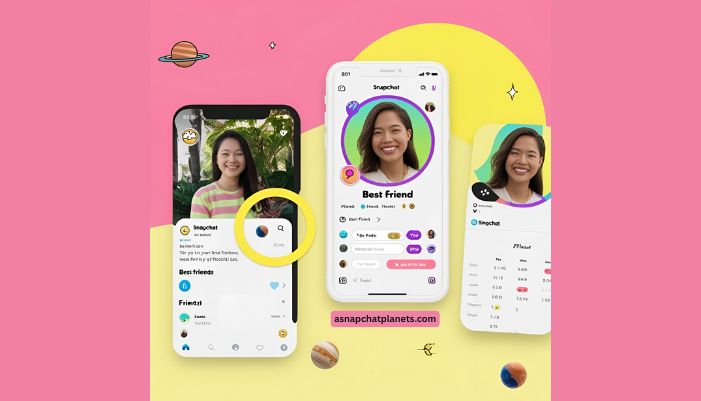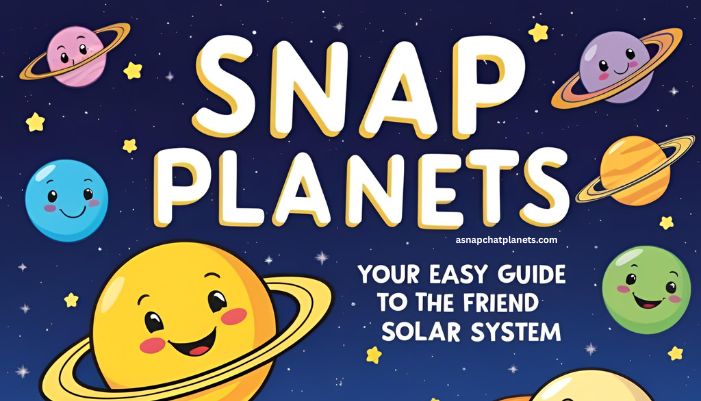Snap Planets is a fun and colorful feature. It shows how close you are to your friends on Snapchat. If you have Snapchat+, you are the Sun. Your eight best friends are the planets. The closer a planet is to you, the stronger your friendship. This idea comes from the real solar system. Just like planets go around the Sun, your friends go around you in Snapchat’s version.
How Does It Work?
When you talk to someone a lot on Snapchat, they move closer to the Sun—you!
Snapchat uses snaps, chats, and stories to rank your friends. It updates the planets based on how much you interact.
This is only available to Snapchat+ users. You also have to turn it on in your settings.
Snapchat Planets in Order (And What They Mean)
Here are the planets and what each one shows:
1. Mercury – Closest Friend
You talk the most with this friend. You snap and chat with them a lot.
2. Venus – Second Closest
You still talk a lot, but not as much as Mercury.
3. Earth – Third Closest
A steady friend. You talk and snap often.
4. Mars – Fourth Closest
A fun friend. You may chat often but not daily.
5. Jupiter – Fifth Place
You interact sometimes. A casual friend.
6. Saturn – Sixth Place
You don’t talk much, but there’s still a connection.
7. Uranus – Seventh Place
You chat a little. You may share snaps once in a while.
8. Neptune – Eighth Place
You don’t talk much. This friend is the furthest from your Sun.
Wha Do the Planets Look Like?
Each planet has different colors and emojis.
- Mercury: Red with hearts and stars
- Venus: Light brown with colorful hearts
- Earth: Blue and green, with one moon
- Mars: Red with pink and blue hearts
- Jupiter: Orange with little stars
- Saturn: Yellow with a ring and stars
- Uranus: Green with yellow stars
- Neptune: Blue with one star
These help you tell them apart quickly.
How To See Your Planet in a Friend’s Solar System
Want to see how close you are to a friend? Here’s how:

- Open Snapchat
- Go to the friend’s profile
- Tap the Best Friend badge (it has a gold ring)
- You’ll see your planet and your position in their list
Only you can see your own planet. Your friend can’t see it unless they check their own profile.
How To Turn On the Friend Solar System
Snapchat turned this off by default. But it’s easy to turn it on:
- Open Snapchat
- Tap your profile picture
- Tap “Snapchat+”
- Find the “Friend Solar System” and turn it on
Now you can enjoy the feature!
Why Did Snapchat Hide This Feature?
Some people didn’t like the feature. It made some users, especially teens, feel bad when they weren’t someone’s closest friend.
Because of this, Snapchat now keeps it off by default. You must turn it on yourself if you want to use it.
Snapchat also says less than 0.25% of users use the planets feature.
How To Get Snapchat+ and Use Planets
Want to unlock the Friend Solar System? You need to get Snapchat+. Here’s how:
- Open Snapchat
- Tap your profile
- Tap the settings gear
- Tap “Snapchat+”
- Pick a plan: 1 month, 6 months, or 1 year
- Start your free trial (1 week)
- Add your payment info
- Restart the app
That’s it! You’re now a Snapchat+ user.
How Much Does Snapchat+ Cost?
| Country | One Month | Six Months | One Year |
|---|---|---|---|
| United States | $3.99 | $21.99 | $39.99 |
| United Kingdom | £3.99 | £21.99 | £39.99 |
| India | ₹49 | N/A | N/A |
Prices may change, so check the app store for updates.
FAQs About Snapchat Planets
Final Thoughts
Snapchat Planets is a fun way to see how close you are with your friends. It uses a cool solar system theme to rank your top 8 friends. The more you interact, the closer your planet is to the Sun. But remember, it’s just for fun. Real friendship is more than snaps and chats. Don’t let a planet make you feel bad. Talk to your friends in real life too. 😊 If you have Snapchat+, give it a try! And if you don’t like it, you can always turn it off.
